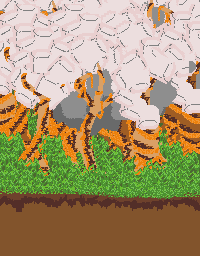
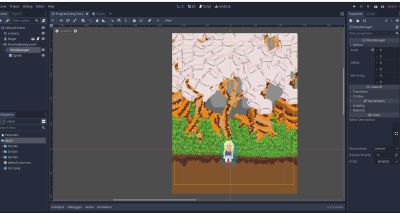
WELCOME TO MARSHMELLOW LAND!! I asked my friend (who plays the main character on my game) about a couple of her favorite things so I combined them to make these forests!! full of marshmallow trees : ) Real wholesome
MMP 270: Introduction to Video Game Design
BMCC Fall 2021


WELCOME TO MARSHMELLOW LAND!! I asked my friend (who plays the main character on my game) about a couple of her favorite things so I combined them to make these forests!! full of marshmallow trees : ) Real wholesome
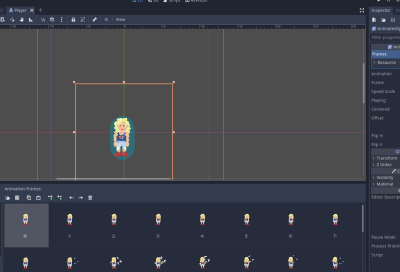
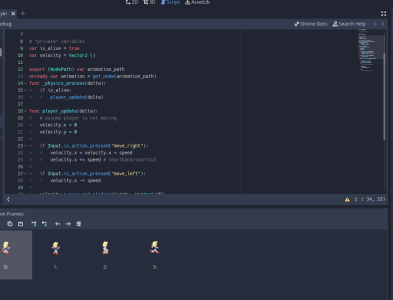
SHE’S COMING TO LIFE lol haha. Here’s my main character finally on Godot. Really excited to play !!
Here are my Main Character Animations !!
Here’s my character design. (This one’s not at all the one I’m working with for my game, but that’s my bad b/c I went ahead).
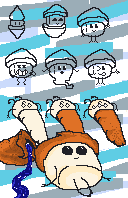
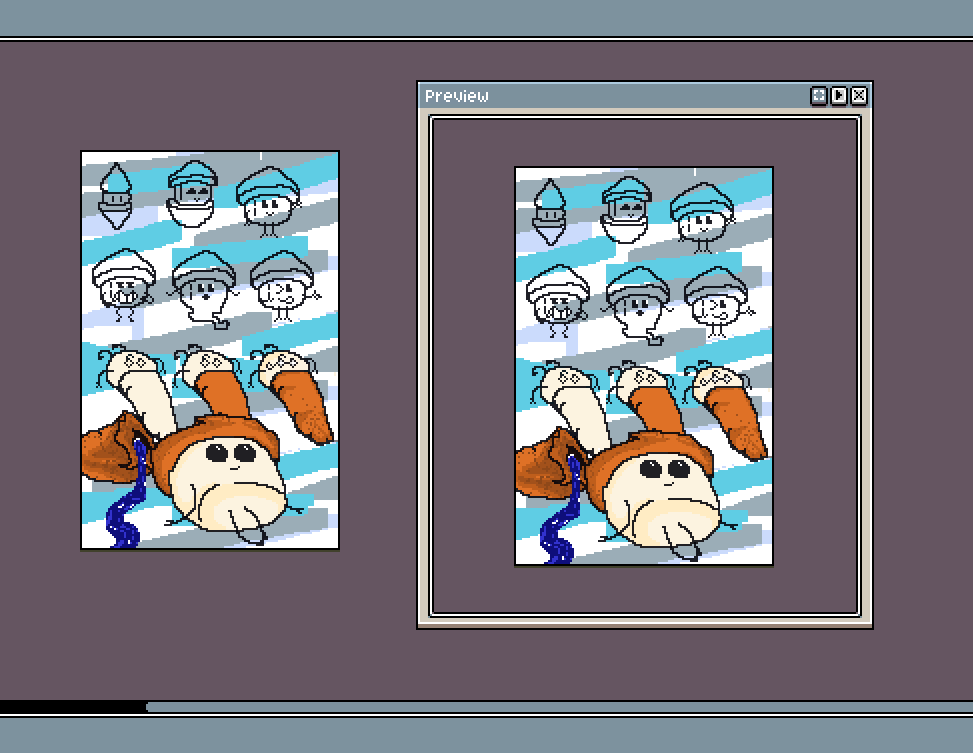
Anyways… This is Onion lol. Its physical appeal’s inherited from its parents; a carrot and a mushroom.
Onion was glad to become a marshmallow as it continued to grow older and lived happily after acknowledging that, even though its carrot hat broke.
(Did It need a back story? you might ask aanndd NOPE, but could I not give it one)
I was really impressed at how meta the author was making the comic sound. He really twisted my brain a bit with the “Pipe or Pipe to be or Pipe not to be” analogy haha
The author was being very descriptive with everything we were seeing we were seeing. A perfect example for reference is on page 27 when he says; “This is paper, This is INK on paper”. Things we know of but don’t really stop to acknowledge.
“The images we use to represent concepts, ideas, and philosophies.” “Icons of the practical realm.” “And finally, Icons we call pictures: images designed to actually resemble their subjects.” If you were to stop and broke down the things you look around you and think of the pre-determined perception you see ’em with… YOU’D BE AMAZED!

Chapters/Points I found interesting
-What is a game?
-Why do people play games?
-The game design sequence.
I refer to ‘obstacles’ we encounter as pupils, such as; minimizing what we can learn from game design because of how comfortable we might already feel in this environment as players.
“Those who overrate their own understanding undercut their own potential for learning.”(3rd paragraph).
Another point this chapter brought up that amused me was the different types of engines where games, computer games specifically, can be played on. (And I’m not referring to gaming platforms if that’s what came to mind for you).
“These games are played on five types of computers: expensive dedicated machines for the arcades (“coin-op” machines), inexpensive dedicated machines (“handhelds”), multi-program home games, machines such as the ATARI 2600 and the ATARI 5200, personal computers, and large mainframe computers.” (3rd page of chapter 1, computer games section).
To prove oneself by demonstrating prowess, aka becoming an expert on a specific field (In this case this could be a specific game brand, the game mechanic, and obtaining recognition from social events that for some can be tournaments.)
“There are also players who carry this to extremes. Their prime goal is not merely to win, but to beat somebody, preferably somebody worth beating.” (2nd page of 4th chapter, First paragraph of the section called ‘Proving Oneself’).
Another reason is Fantasy/Exploration. This quote perfectly summarizes this whole section, though of course, I suggest reading the full things because of some “spicy” subjects the author touches on. “Like a movie, a book, or music, a game can transport the player away from the tawdry world that oppresses him and create a fantasy world in which he can forget his problems.” (3rd page of 2nd chapter, First paragraph).
“I claim that the fundamental motivation for all game-playing is to learn.” (2nd page of chapter 2, 4th paragraph).
The sequence of events is- Choose a goal and a topic, Research and preparation, Design Phase, I/O Structure, Game structure, Program structure, Evaluation of the design, Pre-Programming phase, Programming phase, Playtesting phase, Post-Mortem.
Some quotes that stood out to me;
“The procedure I will describe is based on my own experiences with game design, and reflects many of the practices that I use in designing a game.” you’re not restricted to follow this sequence of events.
“..the game designer’s personality should dictate the working habits she uses.” I love that the author pointed this out. You should be self-aware of the way you work. How consistent you are. When your motivation to do such a project comes and goes.
Thank you!
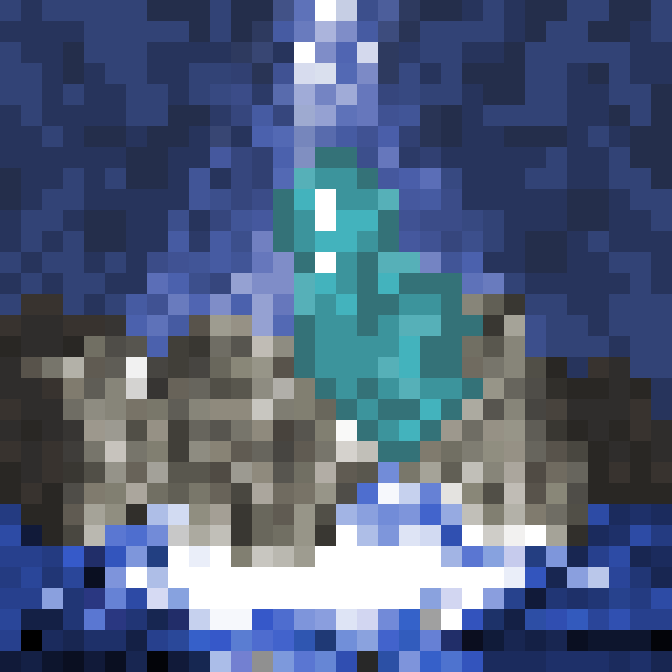
I inspired this Art on the animated movie Atlantis By Disney, My favorite animated movie. This replicates a really climatic scene which I don’t wanna spoil. The only difference is that the source of power is a key. A key to, or of(really..), to my emotions.
Chaos magic.
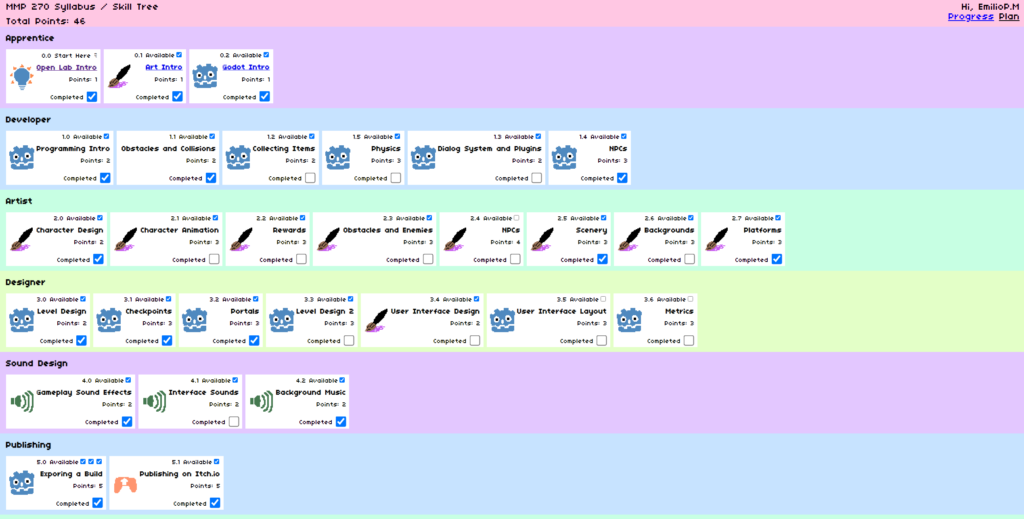

After a couple of the basics for game development such as programming is taken care of, I want to focus more on everything that will surround the player in the game. This is when scenery, platforms, gameplay sound effects, and background music kick in and really do their part. I’d like my players to be a UH for the world this game takes place in (Without stopping the suspension of disbelief). : )